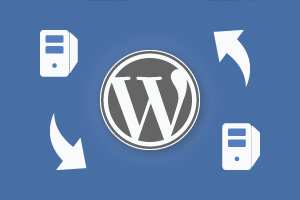If you’ve ever had the unpleasant experience of installing a new plugin for use on your existing WordPress website only to find multiple errors once you’ve uploaded your pages to the Internet, then this article is for you. There are ways to avoid this, as I have learned through experience. By setting up a testing environment and observing the way new themes, plugins and versions of WordPress affect your site, you can troubleshoot and fix these issues before the site goes live.
WordPress Developers take full advantage of these testing options and there’s no reason you can’t as well. I’ll go over several ways to test your site, including cloning and using a localhost environment. OS X or Windows both have options for testing, so I will give you some tips for each as well.
MAMP
If you are familiar with the acronym, MAMP, you know it means Macintosh, Apache, MySQL and PHP. MAMP is an application that allows you to use an OS X localhost environment to test WordPress by giving you access to the PHP and MySQL servers. This app is currently on Version 3. A new version is also being tested, and will soon be available for Windows. You can download and install MAMP for free or you can opt to pay for a premium version which will allow you to set up multiple servers or perform an automatic installation of WordPress.
XAMP
For Windows, Linux and OS X, there is XAMP which is a cross-platform web server. (Just so you know, you get to XAMP like this: Cross-Platform (X), Apache (A), MySQL (M), PHP (P) and Perl (P)). This web server package is open source, free and is a great choice for installing WordPress and setting up your MySQL database. If may run into some issues while setting up this software, there are online forums and other resources to help you through the setup process.
DesktopServer
DesktopServer is a great way to setup multiple virtual servers to test your WordPress website. You can use DesktopServer to test themes and plugins. With the free, but limited version, you are allowed to set up three installs of WordPress, but by upgrading to the premium version you can perform a Multisite setup.
WampServer
For setting up a development environment in Windows, WampServer is a great choice that can be used in conjunction with PHP, Apache2 and MySQL to create web applications. WampServer will allow you to install WordPress, set up a Multisite and create a database with MySQL.
Duplicator
Duplicator is another widely used, free plugin which allows you to clone your WordPress site so that it may be used in a separate location. This makes it ideal for duplicating your site so that you can test your new themes and plugins before you make alterations to your live website. Duplicator does not support Multisite, however.
Instant WordPress
For a portable, standalone testing environment, Instant WordPress is the complete package for Windows. It will basically turn your computer into a development server. Portability is the name of the game with Instant WordPress. You can use a USB key to run it and it’s free as well. Instant WordPress comes with built-in PHP, MySQL and an Apache server that can be automatically stopped and started.
Bitnami
For a free WordPress stack, Bitnami is a quick fix. This open source solution can be used with Linux and OS X, as well as the cloud and WordPress virtual machines. Bitnami also monitors the release of new versions of WordPress and updates them automatically to keep you current on security and new releases. This is a great way to set up a quick test environment.
The Sandbox
The Sandbox is a plugin that basically clones a WordPress site onto your hosting account. This will allow you to test your site independently. You won’t have to worry about the test site tracking visitors or being visible to search engines either. It’s a good option for WordPress developers working with small sites. This is also a free plugin.
Summary
If you’ve made the mistake of skipping the testing step before, you’ve learned your lesson about the value of using a test site before you go live with changes. A little bit of troubleshooting and preventive maintenance will save you time and trouble down the road. Use Duplicator to recreate your live site in your hosting account. Use DesktopServer with Windows or OS X to create a local server environment. Use Bitnami for its ease. Use some or use all and see which one works best. Do your own tests and reach your own conclusions.


